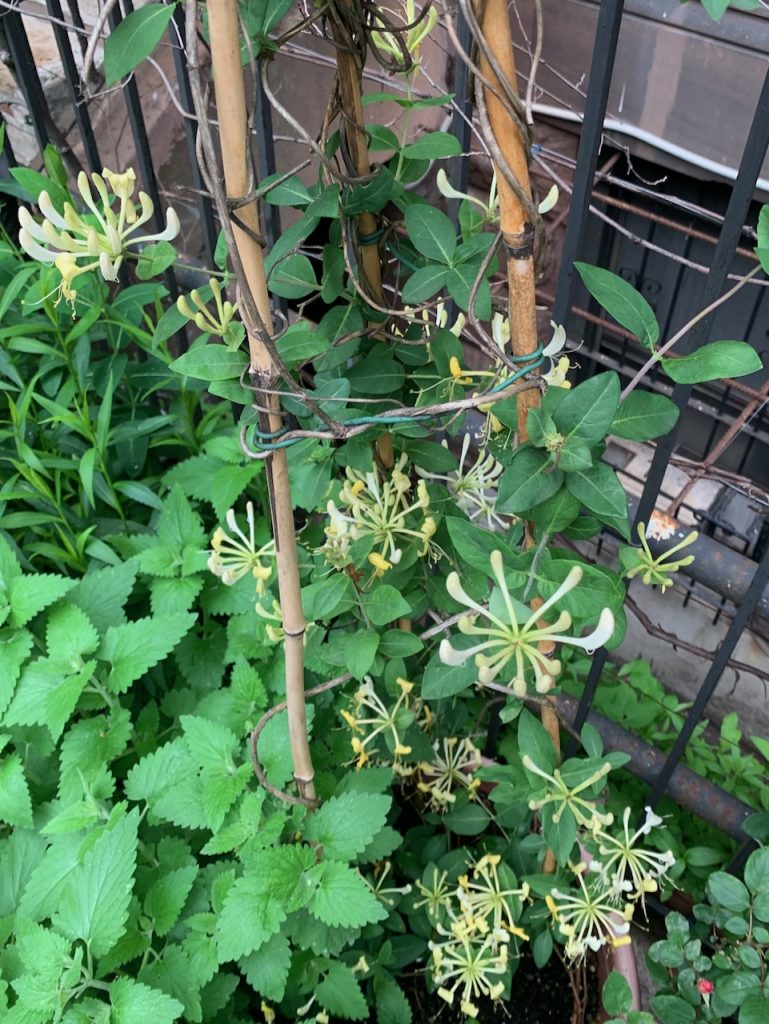I love the thistle-like flowers on our burdock plants!

Sidewalk Greenspace on New York's Upper West Side
I love the thistle-like flowers on our burdock plants!

A nice fiery set of pansies has popped out following today’s rain.

I’m really pleased with the way the grapevines and little trees soften the edges of the otherwise-drab fence and stairs in front of our buildings.

I think these might be ready to eat by tomorrow…

The roses are really having a productive season.

Now that the warm-weather season is well and truly here, the sidewalk garden is fully engaged, with more than fifty feet of green shrubs, grasses, trees, and flowering plants brightening up this stretch of West 106th Street.

The honeysuckle seems to be happy about having been repotted into a larger container at the start of the season, and is throwing out even more of its crazy flower clusters than it did last year.

A plethora of roses in our sidewalk garden.

Our first flush of pinks!

So many tiny yellow flowers — the woad is in bloom!
